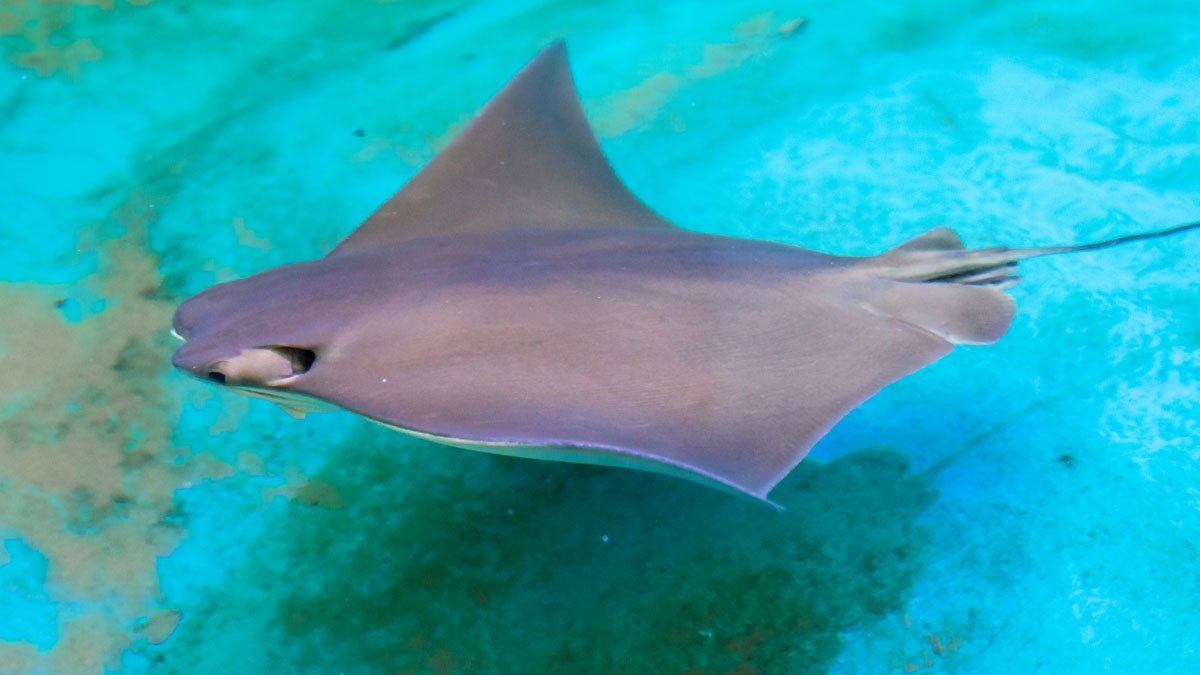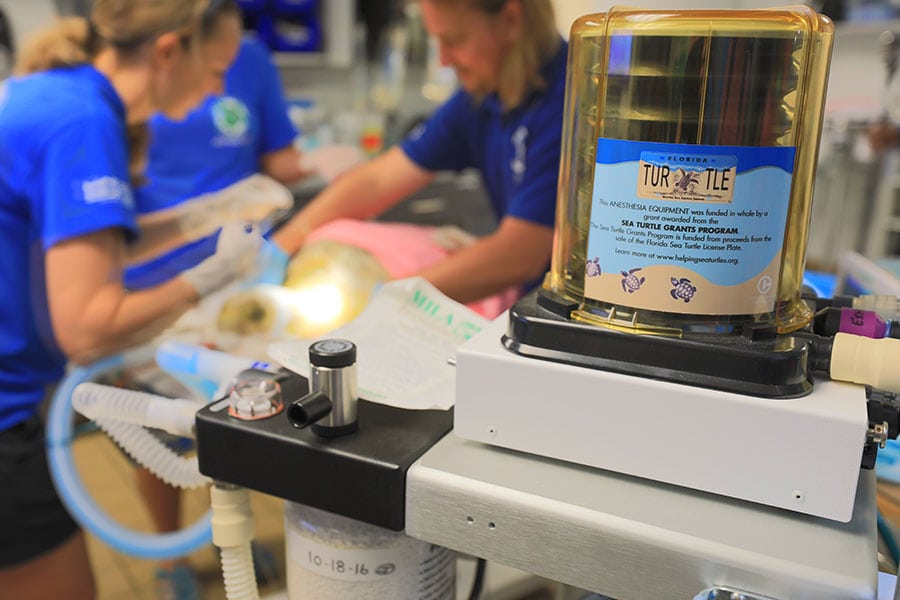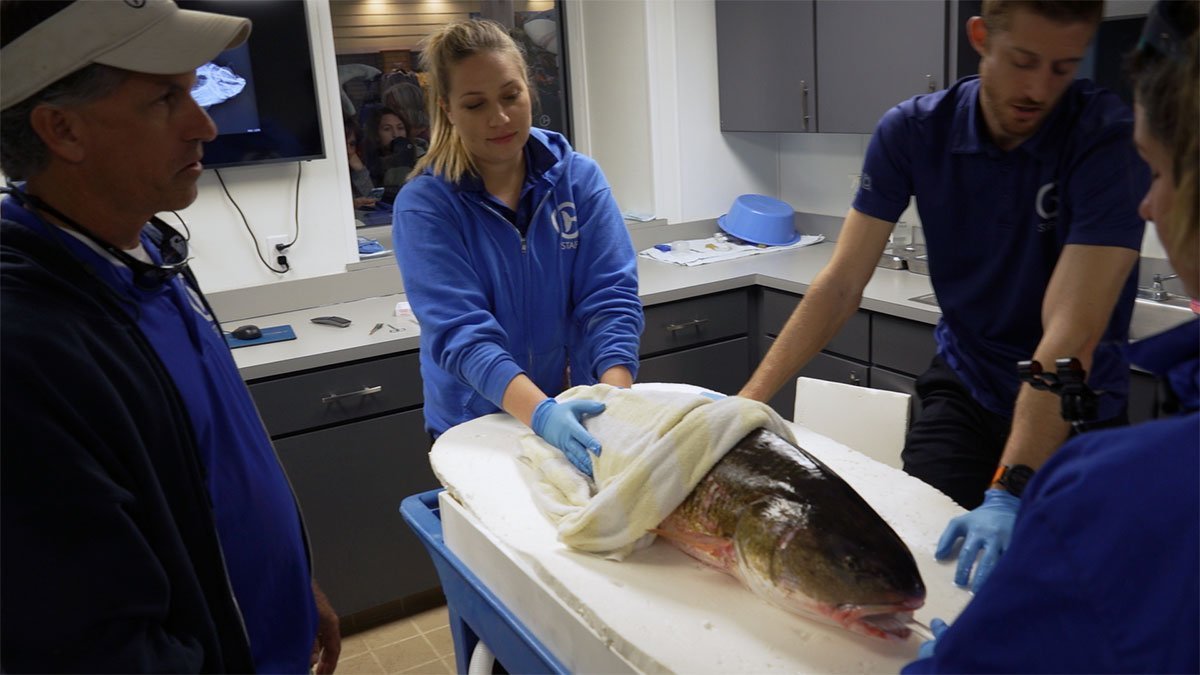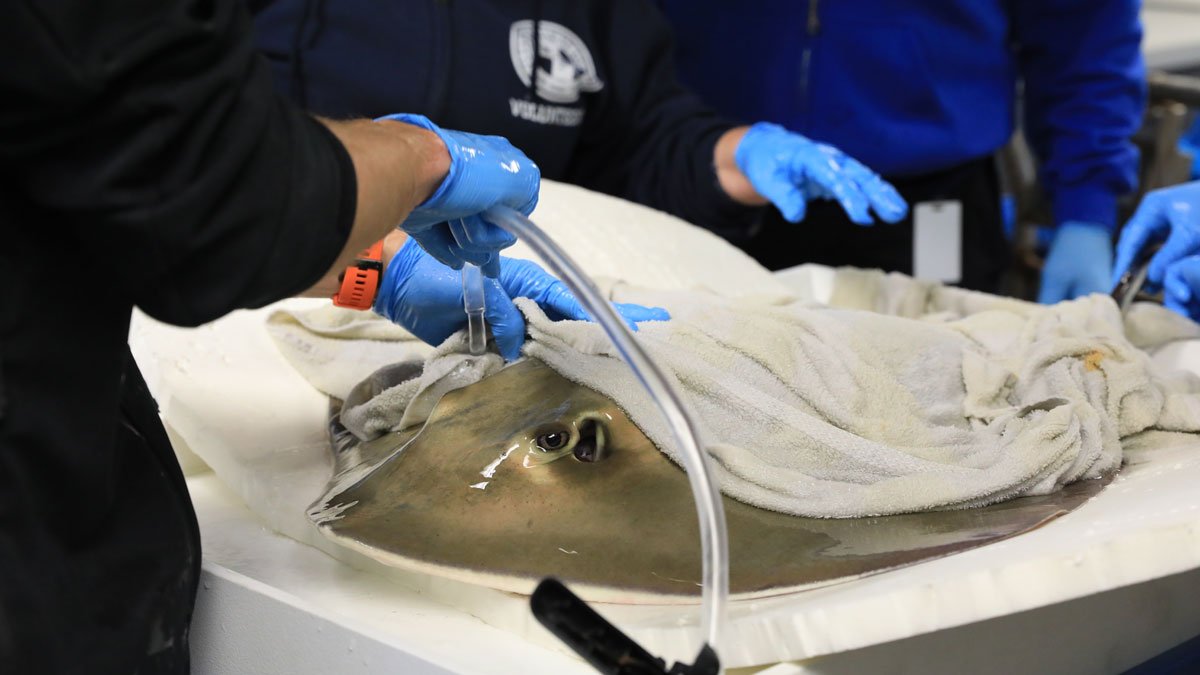
Using Specialized Equipment for Fish and Stingray Treatments
Due to the large diversity of animals we treat at Clearwater Marine Aquarium, such as sea turtles, river otters, fish, stingrays, and sharks, we often have to adapt our procedures to meet the needs of a specific species. Routine procedures and examinations can pose obvious challenges when dealing with animals that do not breathe air — such as fish and stingrays.
One of the ways we are overcoming these challenges is by designing and creating specialty equipment to aid in medical treatments. Currently, we are using a custom fish anesthesia cart that allows us to adapt normal anesthetic protocols for use with animals that get oxygen from water instead of air.
Sedation and Anesthesia in Animal Care
In the medical care of animals, it is sometimes necessary to use sedation and anesthesia for various procedures. Most often, it is associated with surgeries, but this is not the only reason why we may utilize these techniques. Sedation and anesthesia can be used to limit sensations, or feelings, while doing a procedure. It can also be used as a form of restraint during routine exams. Many species of animals, especially wild animals or those undergoing rehabilitation, are not used to human interaction and even simple exams can be stressful for them. In an effort to treat the animal in a way that is safe for both the animal and the medical staff, sedation and anesthesia are invaluable tools.

In mammals, reptiles, and other “air-breathing animals” anesthesia is usually accomplished by adding a medication to the air being supplied to the animal. A typical anesthesia machine takes oxygen, mixes it with a vaporized form of the medication, and then supplies this to the animal through a tube placed into the trachea, or windpipe. This form of anesthesia is often used during sea turtle surgery to remove tumors. The level of anesthesia (how asleep or awake) can be controlled by mixing higher or lower amounts of medication into the air. With a good medical team and proper monitoring, the animal can be maintained at a safe anesthesia level for as long as needed to complete the procedure.

Custom Fish Exam Cart Created
Since fish do not breathe air, but instead get oxygen from water passing across the gills, new protocols must be implemented. With our fish anesthesia cart, we can add medication to the water instead of the air. The medicated water is then pumped to the operating space and across the fish’s gills. Previous versions of this system have been used for fish and stingrays in the past, but many have no control over the amount of anesthetic being delivered. With our design we can control, or custom mix, the amount of anesthetic water and fresh water the animal gets on demand — much as we would with the gas for air-breathers. This gives much more control over the anesthesia level and lets us have safer and faster procedures.

The design of this cart has allowed us to greatly expand the level of care we can provide for our fish and stingrays. We can now accomplish many of the same procedures like bloodwork, surgeries, and x-rays on animals that were previously not possible. This is just one of the many ways that the field of aquatic medicine is evolving. We hope to continue pushing the limits within our field by coming up with new and innovative ways to accomplish previously impossible tasks.
Related: Specialized Seahorse Treatment
Contributed by John Curry, CMA Veterinary Technician.